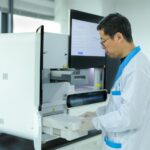A bioprocessor wants to answer one key question: How do the inputs affect the outputs? The answer to that question can be pursued in many ways, and one of them is with an observer. In this case, the observer is not a person, but rather a series of equations that make up a mathematical model of a bioprocess. Such “observers are being developed for bioprocesses due to the high cost or lack of adequate sensors to measure their variables in bioreactors,” according to Vicente Peña-Caballero, PhD, who works in the biotechnology research laboratory at the Universidad de Guanajuato in Mexico, and his colleagues.
So, Peña-Caballero’s team compared two types of observers: a classical extended Luenberger observer and a nonlinear observer. As a pilot study, these scientists applied both models to the production of Bacillus thuringiensis. Although this is an insect-killing bacteria often applied to agriculture, similar techniques could be used in the production of a biotherapeutic.
In brief, Peña-Caballero and his colleagues produced B. thuringiensis in a batch bioreactor, varied the initial conditions such as the concentration of dissolved oxygen and many other variables, and then compared the mathematical observers to see which one produced the most accurate model of the bacterial production.
Although exploring these models involves a tour of vectors, matrices, and more, most readers will just want to know which method worked the best. It was the nonlinear observer. Based on all of these equations and case studies, Peña-Caballero’s team gave an easy-to-digest summary of the results: “They provide insight into the estimation of the state of the dynamics for the B. thuringiensis bioreactor in a batch mode.”
This work reminds me of a sentiment of the 20th Century French novelist Marcel Proust, which basically says that discovery is not about seeing new things, but looking at them in new ways. That could be just what a mathematical observer brings to bioprocessing.


